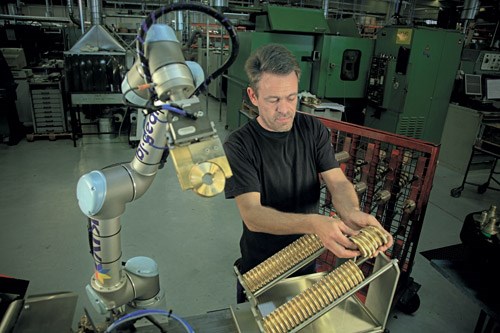Automate to Eliminate Non-Value-Added Labor
Automation should free up employees to add even more, higher value-added items to your operations.

Photo courtesy of BJ Gear (Denmark).
“When we install this automated line, we can eliminate three jobs.” This is probably the stupidest thing that I have ever overheard. (I was eating lunch at a rest stop on the turnpike home from a recent trip.)
There are at least 600,000 high tech manufacturing jobs currently unfilled in the U.S. and Canada. We know there are about 391,000 baby boomer machinists that will be leaving the workforce in the next few years. Who in their right mind wants to eliminate people, especially when they have proven they can come to work, do the work and add value?
The point of automation isn’t to eliminate jobs. It is to eliminate non-value added labor. The employees have already demonstrated they can add value. Automation should free them up to add even more, higher value-added items to your operations.
I believe that people should be engaged at their highest and best use. Check out Norbert Wiener’s book, “The Human Use of Human Beings.”
The point of automation is to let you elevate your existing talent to their highest and best use. Anything else is “the eighth waste.”
Automate to elevate. Not to eliminate. Good people are hard enough to find.
Why would you eliminate your great ones?
Originally posted on PMPAspeakingofprecision.com blog.
Related Content
-
Video Tech Brief: CNC Screw Machines a Solution for Overcoming Labor Shortages
CNC screw machines can exceed job shop productivity and enable manufacturers to overcome perpetual employment gaps.
-
New Thinking from the New Generation for the New Year
“We have to learn to think in a new way.” –Albert Einstein
-
Strengthening Manufacturing Workplaces Through Active Listening
A good strategy to weather the storms of manufacturing market upheavals and unpredictable factors is to commit to continuous, active employee listening.














.jpg;maxWidth=300;quality=90)
